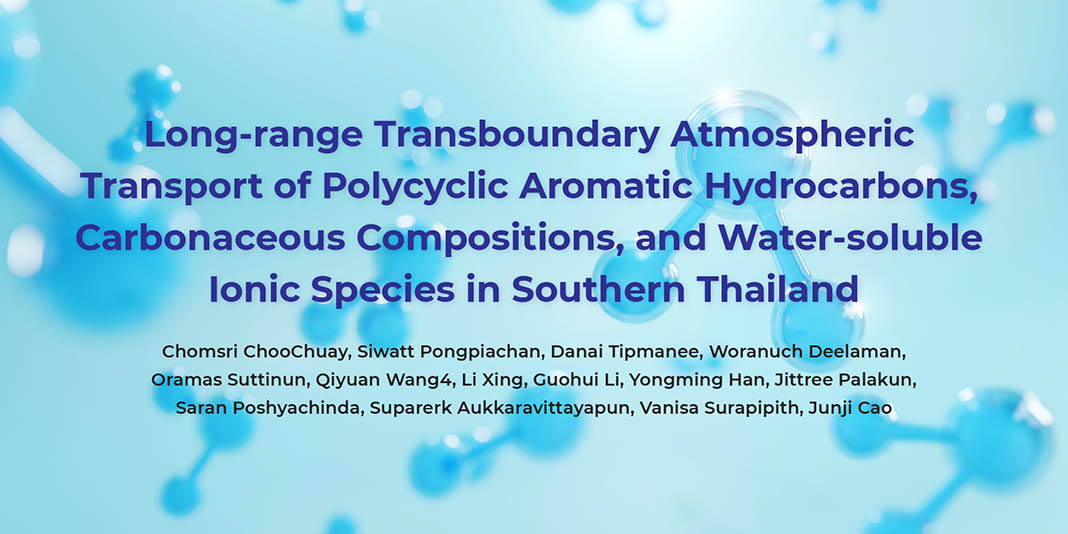Long-range Transboundary Atmospheric Transport of Polycyclic Aromatic Hydrocarbons, Carbonaceous Compositions, and Water-soluble Ionic Species in Southern Thailand
- Details
- SDGS - Research

Long-range Transboundary Atmospheric Transport of Polycyclic Aromatic Hydrocarbons, Carbonaceous Compositions, and Water-soluble Ionic Species in Southern Thailand
Professor Dr. Siwatt Pongpiachan (School of Social and Environmental Development, National Institute of Development Administration), Chomsri ChooChuay, Danai Tipmanee, Woranuch Deelaman, Oramas Suttinun, Qiyuan Wang4, Li Xing, Guohui Li, Yongming Han, Jittree Palakun, Saran Poshyachinda, Suparerk Aukkaravittayapun, Vanisa Surapipith, Junji Cao
Abstract
This study investigated atmospheric particulate matter (PM) with an aerodynamic diameter of < 2.5 μm (PM2.5) observed at the Prince of Songkla University (Phuket Campus) in southern Thailand. All samples (n = 75) were collected using MiniVol™ portable air samplers from March 2017 to February 2018. Carbonaceous aerosol compositions, i.e., organic carbon (OC) and elemental carbon (EC), water-soluble ionic species (WSIS), and polycyclic aromatic hydrocarbons (PAHs) in the PM2.5 samples were identified and quantified.
We found that the average PM2.5 concentration was 42.26 ± 13.45 μg m–3, while the average concentrations of OC and EC were 3.05 ± 1.70 and 0.63 ± 0.58 μg m–3, respectively. The OC/EC ratio was in the range of 2.69–16.9 (mean: 6.05 ± 2.70), and the average concentration of 10 selected ions was 6.91 ± 3.54 μg m–3. The average concentration of SO42– was the highest throughout the entire study period (2.33 ± 1.73 μg m–3); the average contribution of SO42– to the major ionic components was 34%. Surprisingly, the average concentrations of NO3– and NH4+ were relatively low. The mean ratio of [NO3–]/[SO42–] was 0.33 ± 0.24. Strong positive correlation was found between K+ and both OC and EC (r = 0.90 and r = 0.93, respectively). It is also precious to highlight that biomass burning (BB) is the major source of OC, EC and K+, which multiple studies have confirmed that the role of K+ as a biomass marker. Results showed that BB episodes might play a major role in producing the observed high levels of OC. The relatively high abundance of both B[g,h,i]P and Ind suggests that motor vehicles, petroleum/oil combustion, and industrial waste burning are the primary emission sources of PAHs in the ambient air of Phuket. Interestingly, principal component analysis (PCA) indicated that vehicular exhausts are the main source of carbonaceous aerosol compositions found in the ambient air of Phuket, whereas the contributions of biomass burning, diesel emissions, sea salt aerosols and industrial emissions were also important.
อ่านเพิ่มเติมได้ที่ : Long-range Transboundary Atmospheric Transport of Polycyclic Aromatic Hydrocarbons, Carbonaceous Compositions, and Water-soluble Ionic Species in Southern Thailand